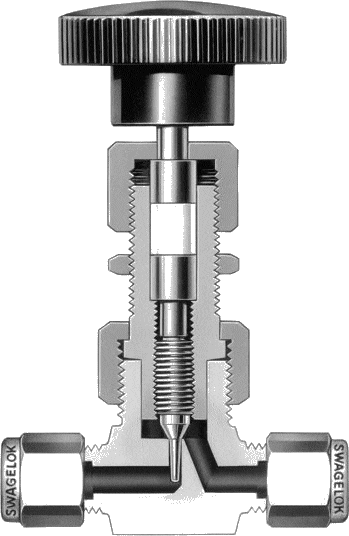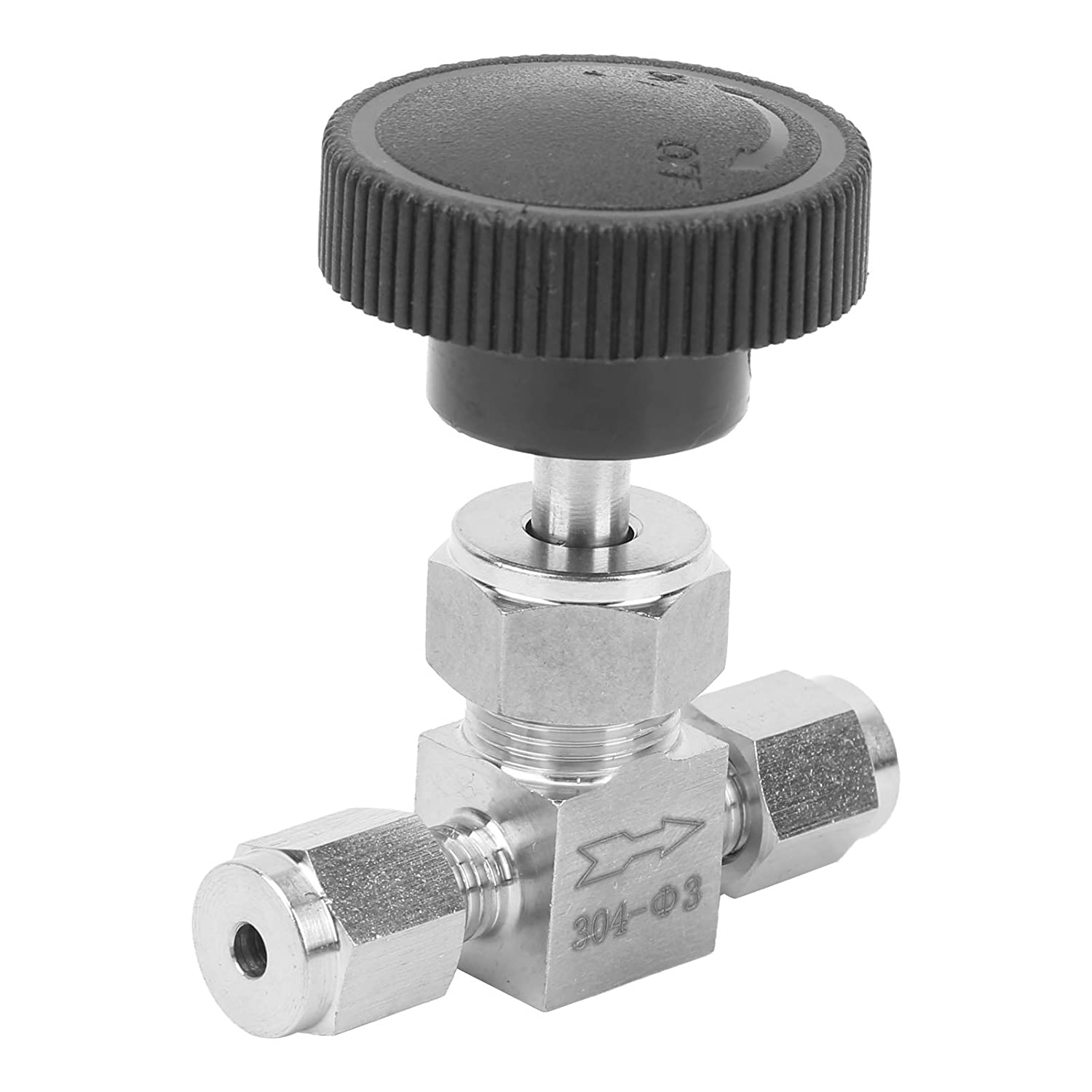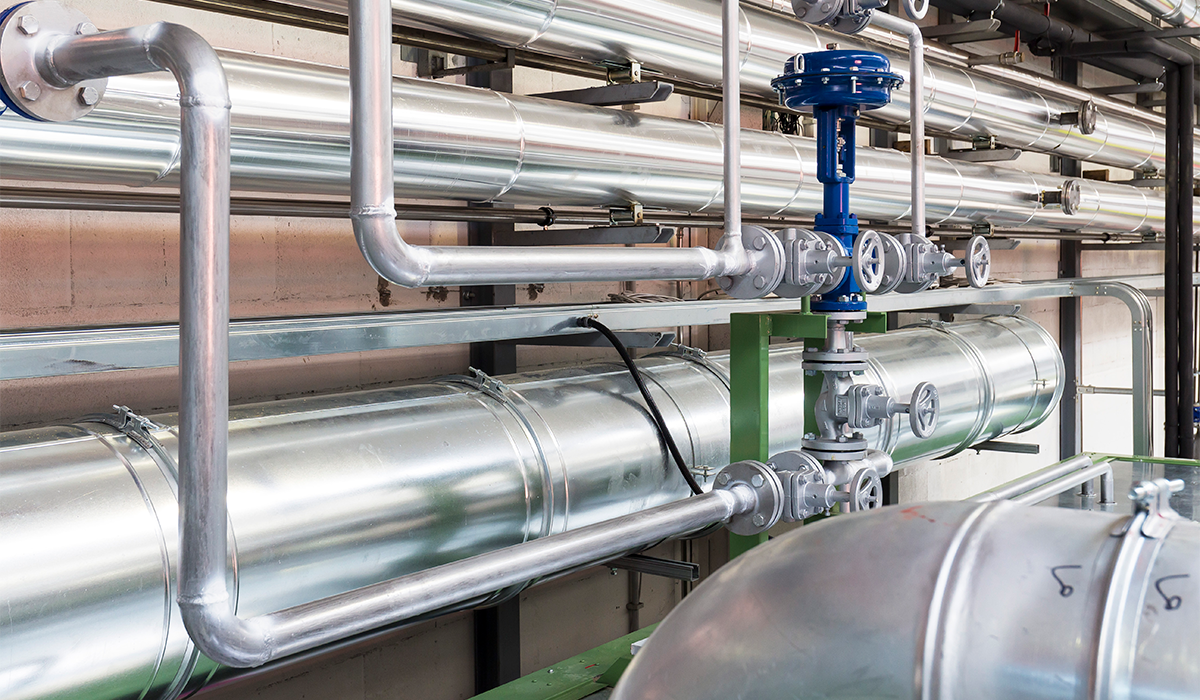Needle Valve : Types, Symbols, Uses – All There Is To Know About The Essential Object
A needle valve is a precision control valve that regulates the flow of liquids or gases through a pipe or tubing. The valve features a pointed tip that resembles a needle, which can be adjusted to control the flow by changing the size of the opening. This makes needle valves ideal for applications where fine control is required, such as metering, sampling, and control systems. The design of needle valves makes them well-suited for high-pressure environments and they are commonly used in industrial and scientific settings.
What is a Needle Valve?
A needle valve is a type of control valve that is used to regulate the flow of fluid or gas in a piping system. It is characterised by its tapered needle-like point that is used to control the size of the opening through which the fluid or gas flows. The valve is typically used in applications where precise control of the flow rate is required, such as metering, sampling, and control systems.
The operation of a needle valve is based on the movement of a threaded stem that rotates to move the needle-shaped point in and out of the fluid or gas flow path. As the stem is rotated, the point moves closer to or further away from the seat, which regulates the size of the opening and the flow of fluid or gas through the valve.
Needle valves are often made of materials that can withstand high pressure and corrosive fluids, such as stainless steel, brass, and other alloys. The choice of material will depend on the specific application and the conditions it will be used in.
In addition to precise control, needle valves also offer a number of other benefits, including durability, reliability, and ease of use. They are widely used in industrial and scientific settings, as well as in various applications in the oil and gas, petrochemical, and water treatment industries.
Here’s some additional information and details about needle valves:
- Flow control: Needle valves are designed for precise control of fluid or gas flow rate. The tapered needle-like point is positioned close to or away from the valve seat, which adjusts the size of the opening and regulates the flow rate. This allows for fine-tuning of the flow rate, making needle valves ideal for applications where precise control is necessary.
- Adjustment: The operation of a needle valve is controlled by a threaded stem that rotates to move the needle-shaped point in and out of the flow path. The adjustment of the valve can be done manually, or by using a motor or actuator to rotate the stem.
- Materials: These valves are made of materials that can withstand high pressure and corrosive fluids, such as stainless steel, brass, and other alloys. The choice of material will depend on the specific application and the conditions it will be used in.
- Seal: They feature a tight seal between the needle and the valve seat to prevent fluid or gas leakage. The seal is typically made of a soft material, such as Teflon or rubber, that provides a tight, leak-free seal.
- Versatility: They are versatile and can be used in a variety of applications, including control systems, metering, sampling, and pressure regulation. They are commonly used in the oil and gas, petrochemical, water treatment, and industrial processing industries.
- Connection types: They are available in a variety of connection types, including threaded, socket weld, butt weld, and flanged connections. The choice of connection type will depend on the specific application and the requirements of the piping system.
- Maintenance: These valves are durable and reliable, but regular maintenance is necessary to ensure they continue to function correctly. This may include cleaning, tightening connections, and replacing worn or damaged parts.
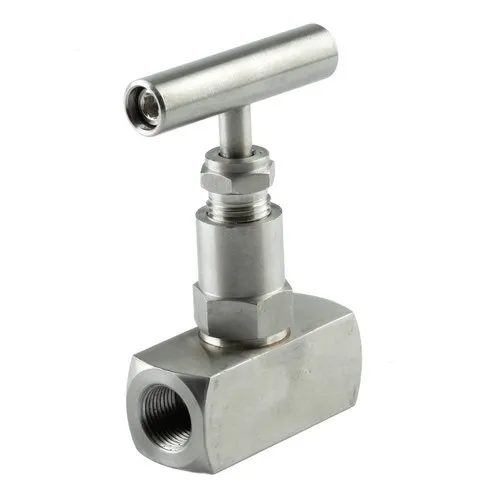
Types of Needle Valves?
There are several types of needle valves, including:
- Manually operated needle valves: These valves are adjusted by hand, using a handle or a wrench to turn the threaded stem and adjust the flow rate.
- Actuated needle valves: These valves are automated and controlled by an actuator, such as an electric motor or a pneumatic cylinder, which rotates the stem to adjust the flow rate.
- Two-way needle valves: These valves control the flow of fluid or gas in one direction, and are typically used in applications where a constant flow rate is desired.
- Three-way needle valves: These valves can control the flow of fluid or gas in two directions, and are often used in applications that require more complex flow control.
- High-pressure needle valves: These valves are designed for use in high-pressure applications and are made of materials that can withstand high pressures, such as stainless steel, brass, and other alloys.
- Isolation needle valves: These valves are used to isolate a section of a piping system and can be used for maintenance, repairs, or system upgrades.
- Bleed valves: These valves are used to release small amounts of fluid or gas from a system, and are commonly used in applications where pressure needs to be regulated or vented.
Uses and Functions
Needle valves are widely used in various industries and applications due to their precise flow control capabilities and versatility. Some of the key uses and functions of needle valves include:
- Control systems: Needle valves are commonly used in control systems to regulate the flow of fluid or gas and maintain a constant pressure.
- Metering: Needle valves are often used in metering applications to measure the flow rate of fluid or gas in a piping system.
- Sampling: Needle valves are used to collect samples of fluid or gas for analysis in laboratory and research settings.
- Pressure regulation: Needle valves can be used to regulate the pressure in a piping system and maintain a constant flow rate.
- Industrial processing: Needle valves are used in various industrial processes, including oil and gas, petrochemical, and water treatment.
- High-pressure applications: Needle valves are designed to withstand high-pressure applications and can be used in high-pressure systems, such as those found in the oil and gas industry.
- Fine-tuning flow rate: Needle valves are ideal for precise control of fluid or gas flow rate, making them useful in applications where fine-tuning of the flow rate is necessary.

Symbols
In instrumentation and process control diagrams, needle valves are often represented by a symbol that shows the basic design and function of the valve. The most common symbol used for needle valves is a circle with a tapered point inside, representing the needle-shaped point that regulates the flow of fluid or gas.
Additionally, some symbols may include the type of connection on the valve, such as threaded, socket weld, butt weld, or flanged connections, and the direction of flow through the valve. Arrows pointing in the direction of flow may also be included to indicate the flow direction through the valve.
In process and instrumentation diagrams, symbols are used to represent various components in a system, making it easier to understand the flow of fluid or gas and the operation of each component. The use of standardised symbols allows for clear and consistent communication between engineers, technicians, and operators.
Additional information on the symbols and representations used for needle valves in engineering drawings and schematics:
Industry Standard: The most commonly used symbol for needle valves in engineering drawings and schematics is the ANSI/ISA-5.1-2009 standard symbol. This symbol is recognized and used globally in the process control and instrumentation industries.

Standard Components: The standard ANSI/ISA-5.1-2009 symbol for a needle valve includes the following components: a circle to represent the body of the valve, an arrow pointing in the direction of fluid flow, and a smaller circle to represent the needle-shaped point. The symbol may also include additional information, such as the size of the valve or the type of material it is made of.
Variations: While the ANSI/ISA-5.1-2009 standard symbol is widely used, there may be variations in the symbols used by different manufacturers or in different regions. For example, some symbols may include additional information such as the type of connection used by the valve or the type of actuator used to control it.
Importance: The use of standard symbols for needle valves in engineering drawings and schematics helps to ensure consistency and clarity in the design and operation of piping systems. It allows engineers and technicians to quickly and easily identify the type and function of each component, ensuring efficient and effective operation.
It’s important to note that the above information is based on the most commonly used symbols for needle valves, and may vary depending on the specific standards or conventions used by different industries or regions.
Working
A needle valve works by regulating the flow of fluid or gas through a piping system. It does this by using a tapered, needle-like point to control the size of the opening through which the fluid or gas flows. The needle is positioned close to or away from a valve seat, which regulates the flow rate.
The operation of a needle valve is controlled by a threaded stem that rotates to move the needle in and out of the flow path. As the stem is rotated, the needle moves closer to or further away from the seat, which adjusts the size of the opening and the flow rate. The adjustment of the valve can be done manually or through the use of a motor or actuator to rotate the stem.
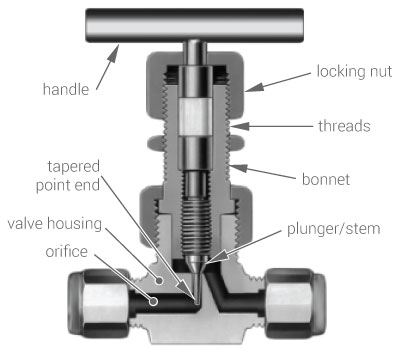
The tight seal between the needle and the valve seat is critical to the proper operation of the valve. The seal is typically made of a soft material, such as Teflon or rubber, that provides a tight, leak-free seal. This prevents fluid or gas from leaking out of the valve, ensuring accurate control of the flow rate.
Needle valves are widely used in a variety of applications where precise control of fluid or gas flow rate is necessary, including control systems, metering, sampling, and pressure regulation. They are commonly used in the oil and gas, petrochemical, water treatment, and industrial processing industries.
Conclusion
In conclusion, needle valves are a type of control valve that are designed for precise regulation of fluid or gas flow in a piping system. They use a tapered needle-like point that is positioned close to or away from the valve seat to control the size of the opening and regulate the flow rate. Needle valves are commonly used in industrial, scientific, and process control applications, and they offer a number of benefits including precise control, durability, and ease of use.
The operation of a needle valve is controlled by a threaded stem that can be adjusted manually or by a motor, and they are available in a variety of connection types to suit different piping systems. Regular maintenance is necessary to ensure the continued performance and reliability of needle valves.
